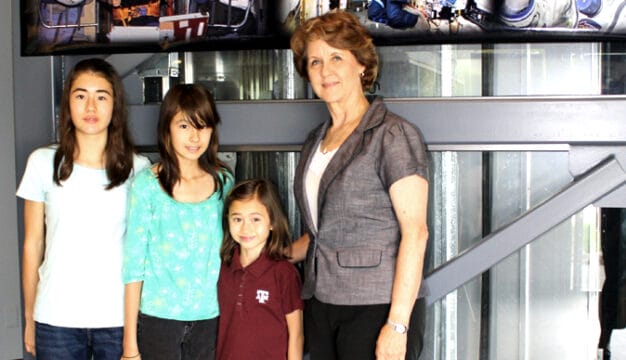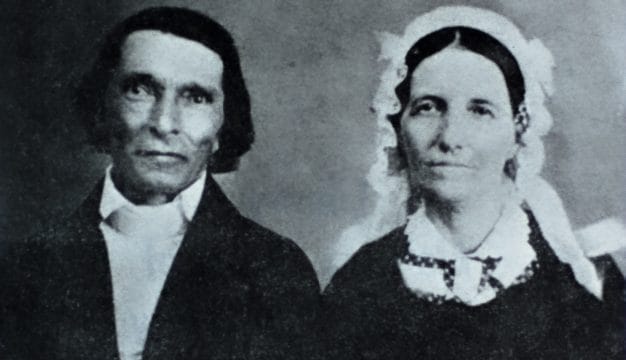Henry Hartsfield
Henry “Hank” Warren Hartsfield Jr. (1933-2014) was a U.S. Air Force (USAF) pilot who served as an astronaut with the National Aeronautics and Space Administration (NASA) beginning in 1969. Hartsfield flew missions on three different shuttles: the Challenger (OV-099), the Columbia (OV-102), and the Discovery (OV-103), serving as commander on that craft’s maiden space voyage. Hartsfield would eventually log a total of 483 hours in space, and after his missions were completed, he continued to work for NASA in several important positions.
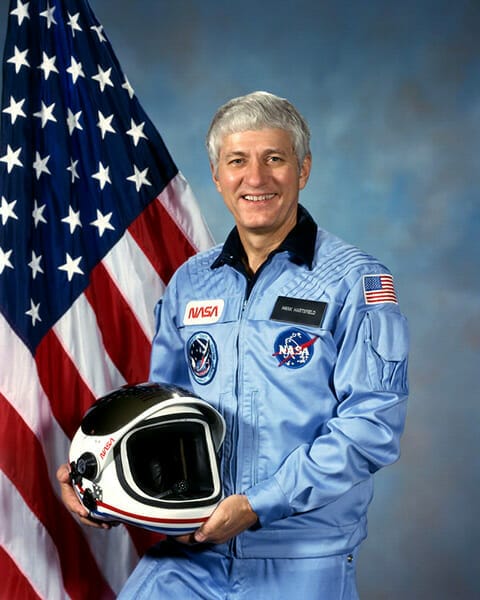 Henry Hartsfield
Hartsfield was born in Birmingham, Jefferson County, on November 21, 1933, to Henry and Alice Norma Sorrell Hartsfield. He graduated from West End High School and then earned a B.S. in physics from Auburn University, in Auburn, Lee County, in 1954. While at Auburn, he served in the Reserve Officers’ Training Corps. He joined the USAF in 1955 and was stationed with the 53rd Tactical Fighter Squadron in Bitburg, Germany. Hartsfield later graduated from the USAF Test Pilot School at Edwards Air Force Base, California, and then became an instructor there. As a pilot, he logged more than 7,300 hours of flight time, primarily in jet fighters. In 1957, Hartsfield married Judy Frances Massey of Princeton, North Carolina, and they had two children. He completed his education with graduate work at Duke University in Durham, North Carolina; the Air Force Institute of Technology (an affiliate of Air University) at Wright-Patterson Air Force Base, Ohio; and the University of Tennessee in Knoxville, graduating from the latter institution with a master’s degree in engineering science in 1971.
Henry Hartsfield
Hartsfield was born in Birmingham, Jefferson County, on November 21, 1933, to Henry and Alice Norma Sorrell Hartsfield. He graduated from West End High School and then earned a B.S. in physics from Auburn University, in Auburn, Lee County, in 1954. While at Auburn, he served in the Reserve Officers’ Training Corps. He joined the USAF in 1955 and was stationed with the 53rd Tactical Fighter Squadron in Bitburg, Germany. Hartsfield later graduated from the USAF Test Pilot School at Edwards Air Force Base, California, and then became an instructor there. As a pilot, he logged more than 7,300 hours of flight time, primarily in jet fighters. In 1957, Hartsfield married Judy Frances Massey of Princeton, North Carolina, and they had two children. He completed his education with graduate work at Duke University in Durham, North Carolina; the Air Force Institute of Technology (an affiliate of Air University) at Wright-Patterson Air Force Base, Ohio; and the University of Tennessee in Knoxville, graduating from the latter institution with a master’s degree in engineering science in 1971.
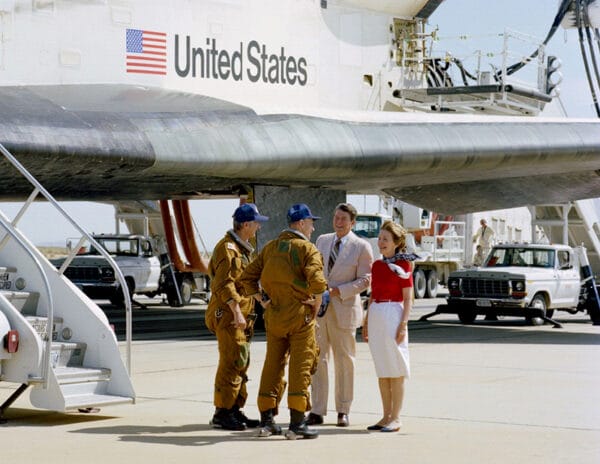 Columbia Landing
In 1966, Hartsfield was assigned to the USAF Manned Orbiting Laboratory (MOL) Program, which proposed to use a modified Gemini space capsule to serve as an orbiting laboratory, intended for missions 40 days in length and staffed by two-man crews. The unsuccessful program was cancelled in 1969, and Hartsfield was reassigned to NASA’s astronaut program. He retired from the USAF in 1977 and began working for NASA as a civilian, starting out as a member of the support crews for Apollo 16 and the Skylab 2, 3, and 4 missions, and he was also a backup pilot for the second and third test missions of the first space shuttle, Columbia, in November 1981 and March 1982, respectively. In June 1982, he participated in his first spaceflight, joining Cmdr. Thomas K. “Ken” Mattingly II to crew the Columbia on its fourth and final test flight. Columbia orbited Earth 112 times, and Mattingly and Hartsfield conducted thermal tests on the shuttle’s systems, surveyed contamination of the orbiter’s payload bay, and performed various scientific experiments. Their landing was attended by approximately half a million onlookers, including Pres. Ronald Reagan and First Lady Nancy Reagan, who greeted the astronauts as they disembarked. (The shuttle Columbia would explode, killing all aboard, on February 1, 2003, upon re-entering the Earth’s atmosphere after a 16-day mission in space.)
Columbia Landing
In 1966, Hartsfield was assigned to the USAF Manned Orbiting Laboratory (MOL) Program, which proposed to use a modified Gemini space capsule to serve as an orbiting laboratory, intended for missions 40 days in length and staffed by two-man crews. The unsuccessful program was cancelled in 1969, and Hartsfield was reassigned to NASA’s astronaut program. He retired from the USAF in 1977 and began working for NASA as a civilian, starting out as a member of the support crews for Apollo 16 and the Skylab 2, 3, and 4 missions, and he was also a backup pilot for the second and third test missions of the first space shuttle, Columbia, in November 1981 and March 1982, respectively. In June 1982, he participated in his first spaceflight, joining Cmdr. Thomas K. “Ken” Mattingly II to crew the Columbia on its fourth and final test flight. Columbia orbited Earth 112 times, and Mattingly and Hartsfield conducted thermal tests on the shuttle’s systems, surveyed contamination of the orbiter’s payload bay, and performed various scientific experiments. Their landing was attended by approximately half a million onlookers, including Pres. Ronald Reagan and First Lady Nancy Reagan, who greeted the astronauts as they disembarked. (The shuttle Columbia would explode, killing all aboard, on February 1, 2003, upon re-entering the Earth’s atmosphere after a 16-day mission in space.)
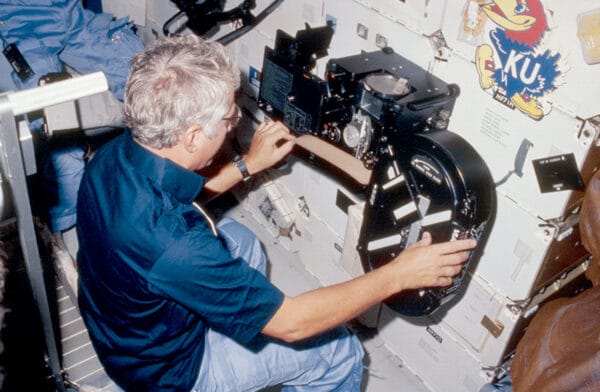 Henry Hartsfield Aboard Discovery
In 1984, Hartsfield was named commander of the six-person crew for what would be the maiden flight of the shuttle Discovery. Originally scheduled for launch on June 26 of that year, the flight was aborted with six seconds to go when a valve failed in one of the main engines and a small fire ensued. The mission launched successfully on August 30, and the Discovery crew deployed three satellites, tested an experimental solar power array intended to eventually power space stations, and performed various scientific and photographic experiments, including capturing motion-picture footage with an IMAX camera.
Henry Hartsfield Aboard Discovery
In 1984, Hartsfield was named commander of the six-person crew for what would be the maiden flight of the shuttle Discovery. Originally scheduled for launch on June 26 of that year, the flight was aborted with six seconds to go when a valve failed in one of the main engines and a small fire ensued. The mission launched successfully on August 30, and the Discovery crew deployed three satellites, tested an experimental solar power array intended to eventually power space stations, and performed various scientific and photographic experiments, including capturing motion-picture footage with an IMAX camera.
Hartsfield’s third and final flight began on October 30, 1985, aboard the shuttle Challenger. This would be the first science mission planned and controlled by a non-U.S. entity, with West Germany taking the lead. Hartsfield commanded an eight-person crew (the largest complement to ever man a shuttle) that included two Germans and a Dutch physicist. The mission crew conducted microgravity experiments in the West German Spacelab module and various other experiments in the physiological and biological sciences and in navigation. Hartsfield’s final mission would also be Challenger‘s last before its disastrous flight on January 28, 1986, when the shuttle exploded a few minutes after liftoff, killing all aboard. He was one of only four NASA astronauts permitted to speak with the press about the disaster and disclosed that the astronauts were not told about NASA engineers’ fears of an O-ring gasket failure on the solid-fuel rocket boosters, which had been a concern for more than two years prior to the Challenger explosion. While admitting to being troubled by the circumstances around the accident, Hartsfield refused to fault NASA’s launch decision process, and he and his companions noted that morale was high and NASA’s astronauts were ready to fly again.
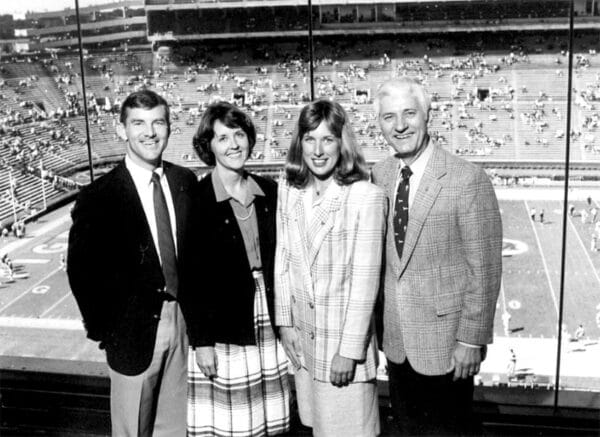 Auburn Alumnae Astronauts
Hartsfield never manned another orbiter, however. In 1986, he became the deputy chief of NASA’s Astronaut Office and went on to become deputy director of the Flight Crew Operations Directorate at Johnson Space Center in Houston, Texas, in 1987. He was later temporarily assigned to the Office of Space Flight at NASA headquarters in Washington, D.C., serving as director of the Technical Integration and Analysis Division. In this capacity, he oversaw the planning necessary to ensure that space shuttle systems were successfully adapted for integration with the International Space Station. The rest of the upper-level, administrative positions he held with NASA for the remainder of his career, at both Marshall Space Flight Center in Huntsville, Madison County, and Johnson Space Center, focused on space station projects and shuttle operations. Hartsfield retired from NASA in 1998 and took a job as vice-president of aerospace engineering for the Raytheon Corporation, retiring from there in 2005.
Auburn Alumnae Astronauts
Hartsfield never manned another orbiter, however. In 1986, he became the deputy chief of NASA’s Astronaut Office and went on to become deputy director of the Flight Crew Operations Directorate at Johnson Space Center in Houston, Texas, in 1987. He was later temporarily assigned to the Office of Space Flight at NASA headquarters in Washington, D.C., serving as director of the Technical Integration and Analysis Division. In this capacity, he oversaw the planning necessary to ensure that space shuttle systems were successfully adapted for integration with the International Space Station. The rest of the upper-level, administrative positions he held with NASA for the remainder of his career, at both Marshall Space Flight Center in Huntsville, Madison County, and Johnson Space Center, focused on space station projects and shuttle operations. Hartsfield retired from NASA in 1998 and took a job as vice-president of aerospace engineering for the Raytheon Corporation, retiring from there in 2005.
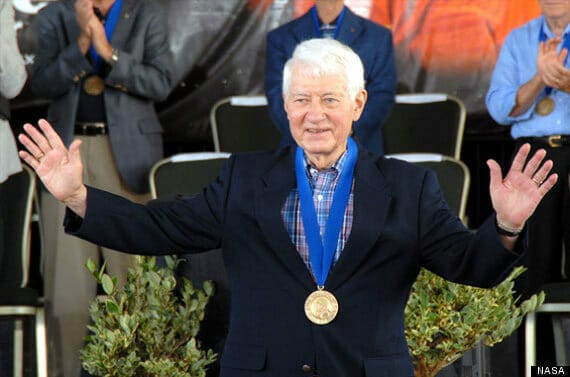 Hartsfield at Astronaut Hall of Fame
Hartsfield received many honors in his lifetime. He was awarded the Air Force Meritorious Service Medal, the Thomas D. White Space Trophy (1973), the Distinguished Civilian Service Award from the Department of Defense (1982), and NASA’s Distinguished Service Medal (1982, 1988), Space Flight Medal (1982, 1984, 1985), and Exceptional Service Medal (1988). He was also awarded an honorary doctorate from Auburn University, as well as being named an Auburn University College of Sciences and Mathematics Distinguished Alumnus (2007). Hartsfield was inducted into the Alabama Aviation Hall of Fame in 1983 and the U.S. Astronaut Hall of Fame in 2006.
Hartsfield at Astronaut Hall of Fame
Hartsfield received many honors in his lifetime. He was awarded the Air Force Meritorious Service Medal, the Thomas D. White Space Trophy (1973), the Distinguished Civilian Service Award from the Department of Defense (1982), and NASA’s Distinguished Service Medal (1982, 1988), Space Flight Medal (1982, 1984, 1985), and Exceptional Service Medal (1988). He was also awarded an honorary doctorate from Auburn University, as well as being named an Auburn University College of Sciences and Mathematics Distinguished Alumnus (2007). Hartsfield was inducted into the Alabama Aviation Hall of Fame in 1983 and the U.S. Astronaut Hall of Fame in 2006.
Hartsfield died on July 17, 2014, in League City, Texas, at the age of 80, from complications resulting from back surgery. A week later, NASA held a wreath-laying ceremony at the Kennedy Space Center for this aviator, astronaut, and administrator who had contributed so much to the shuttle program and to space exploration. He was buried at Arlington National Cemetery in Arlington, Virginia.
Additional Resources
Weber, Bruce. “Henry Hartsfield Jr. Is Dead at 80; Flew, with Fortune, on 3 Shuttles.” New York Times, 23 July 2014, p. B14.
